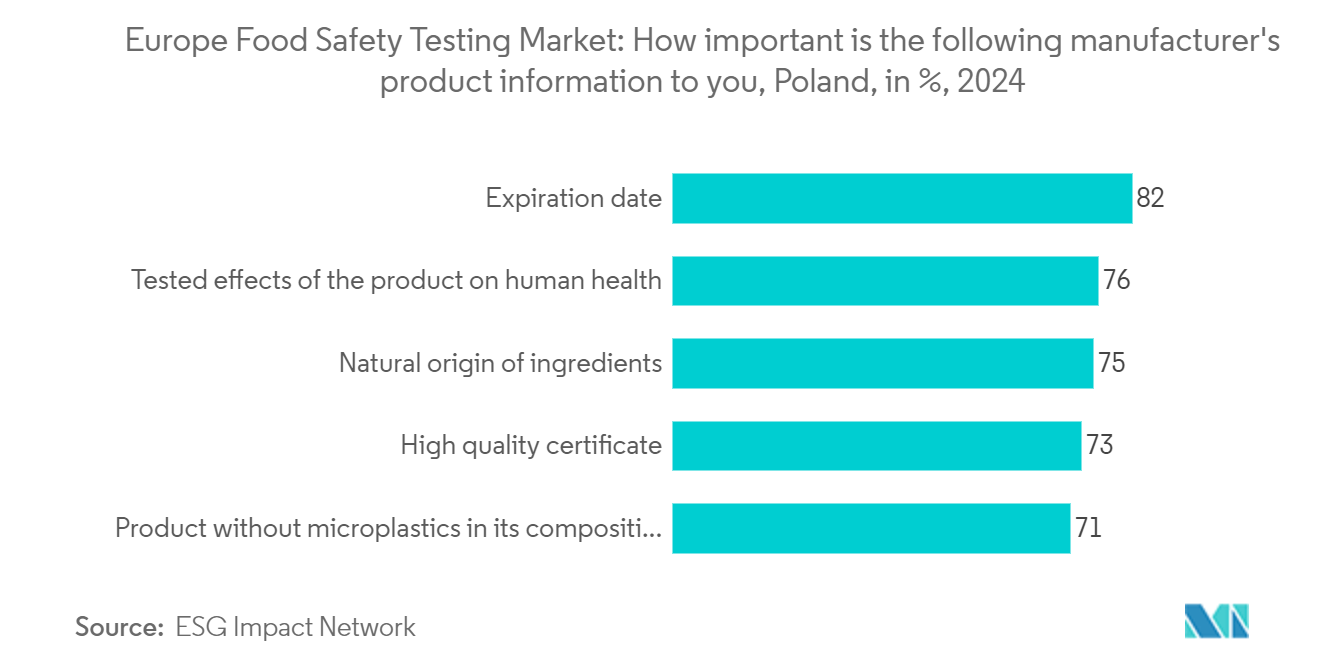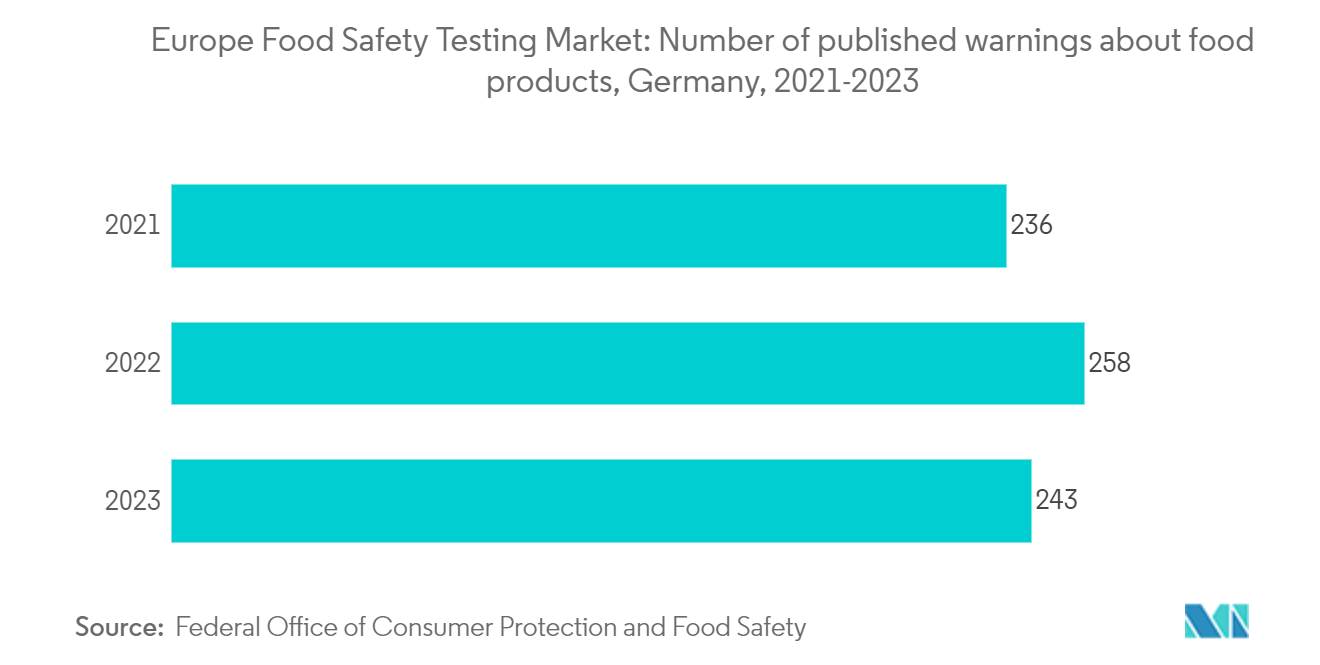Market Trends of Europe Food Safety Testing Industry
Meat And Poultry Products Largely Require Food Safety Testing
Meat can harbor pathogens without any visible signs of degradation. Microbes, including bacteria, yeasts, and molds, can proliferate on meat, leading to spoilage. Improper storage and handling can further accelerate this process, rendering the meat unsafe. For instance, in 2022, Germany's Robert Koch Institute (RKI) reported 9,013 salmonellosis cases linked to fresh duck, chicken, turkey, and other meats, up from 8,220 in 2021. Given these incidents, many publications emphasize the benefits of analyzing chemical molecules tied to deterioration, especially those from microbial sources. This underscores the significant market potential for food testing techniques. To detect spoilage swiftly and accurately, methods like electronic noses, biosensors, and fluorescence spectroscopy have been developed. These advanced techniques enhance quality control and safety measures across industries by offering precise and rapid identification of spoilage indicators. Dominating the market are players like SGS SA, Neogen Corporation, Eurofins Scientific, and Bureau Veritas. These players employ diverse strategies to maintain their market position. For instance, in March 2023, SGS bolstered its portfolio by acquiring the testing business and assets from Amsecruz, a laboratory renowned for its comprehensive microbiological and biotoxin analysis services, especially with full authorizations for seafood testing.

Germany Represents The Largest Market
In Germany, the Federal Office of Consumer Protection and Food Safety, in conjunction with the Federal Institute for Risk Assessment (BfR), plays a crucial role in shaping and enforcing food safety policies. Economic operators bear the responsibility of ensuring the safety, proper composition, characteristics, and labeling of their food products. Relevant authorities conduct routine, risk-based examinations and sampling to ensure compliance with regulations. Health authorities actively investigate contamination sources to curb their spread. Monitoring programs, designed by federal states, are carried out by food inspection and veterinary agencies in urban and rural areas alike. National control initiatives, including the Multiannual National Control Plan, the National Monitoring Plan (BÜP), and the Food Monitoring Program (MNKP), further strengthen the food safety testing market in Germany. Growing awareness of foodborne illnesses has further spurred the demand for food safety testing in Germany. Public health faces significant threats from pathogens like Salmonella, Listeria, and E. coli, as well as contaminants such as heavy metals and pesticides. The 2022 Food Safety Report documented 70 Campylobacter outbreaks affecting 157 individuals, 67 Salmonella outbreaks with 682 cases, three E. coli outbreaks impacting 30 people, and five Listeria outbreaks totaling 14 cases. Norovirus was also noted in 16 outbreaks, affecting 80 individuals. As of 2024, a salmonella outbreak has been linked to 98 reported cases, according to a food safety news report. Consequently, food manufacturers are prioritizing the detection of these harmful agents to avert outbreaks and safeguard consumers. These incidents highlight the growing food safety concerns in Germany, driving market expansion.


